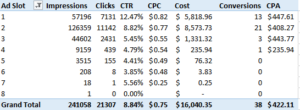
Ad Position Analysis: How to Determine the Ideal Ad Slot?
Many advertisers believe that being at position 1 is the ultimate goal for the success of Google Ads campaigns. However, position 1 is not always the best for your business. There are many things that you should take into account when you determine the best ad position for your business. Is being at position 1 profitable for your business? Do you achieve your business targets at position 1? In this post, we’ll try to help you determine the ideal ad spot where you can achieve your business targets and breakeven.
Ad Position is determined by a formula called Ad Rank that gives ads a score based on your bid and the quality of your ads. So, it’s not mainly about the higher you bid, the more times your ads show in top positions. A higher quality score can lead to better ad positions at lower CPCs. Quality score is a more complex topic that we talked about before, but for now, all you need to know is that the more optimized and relevant your ads are, the higher your quality score will be, and the better ad position you can get.
AdWords allows you to segment ads by slot type Top vs Other, however, Google doesn’t disclose the actual ad slot number where your ads have shown. Google Analytics used to support ad slot position report, but it seems that the dimension is now “deprecated”. Today, we’ll show you one of the workarounds to determine where your ads have shown.
Navigate to your AdWords account, extract a keywords performance report, make sure to include most metrics like [clicks, impressions, cost, Avg. position, conversion, quality score] and any metric you think matters to your business. Once you clean up your data in excel, add a new column and call it “Ad Slot”. Use the ROUND() formula to round avg. position numbers to the nearest integer. For example:
#Avg. position 1.15 should be 1
#Avg. position 1.75 should be 2
#Avg. position 2.55 should be 3
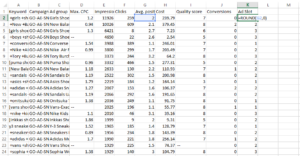
Then, create a pivot table of your data set, add the ad slot in the row field and the rest of the metrics in the value field. Also, make sure to filter out your branded keywords, so they don’t inflate numbers since they will always have the best positions.
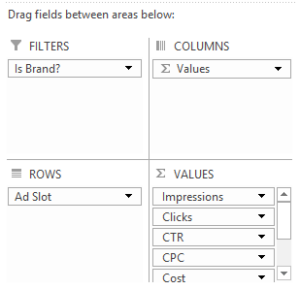
Your pivot table should now look something like this:
It’s time now to review and analyze the data. In most cases, you’ll find a strong correlation between CTR, CPC, and Avg. position. In our example, you can see a sharper decrease in CPC with decreasing the Avg. position.
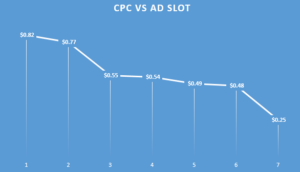
The correlation between Avg. position and CPC can be also reflected in CPA. As you can see, the top positions are not the most profitable spots. Position 2 in this example has the lowest CPA.
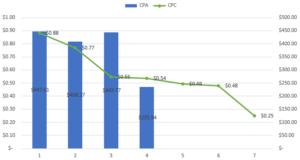
Now, you know which ad position is the best for your business and how much should I bid to place your ad at a profitable spot. Of course, the performance will vary from a campaign to campaign, so be sure to segment and group your campaigns under relevant breakdowns that make sense to your business.
Average Position and Quality Score
In some cases, you’ll find a negative correlation between CPC and Avg. position. For instance, if it happens and you find that the CPCs of slot num 1 is cheaper than slot num 2. This could be explained in two ways:
- The quality score of the keywords in slot num 1 is higher than the quality score of keywords in slot num 2.
- The competition on keywords in slot num 2 is stronger than keywords in slot num 1.
To analyze this further, add the quality score in the pivot table row field, right below the ad slot:
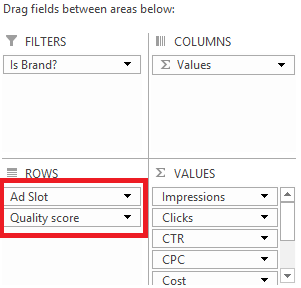
Your pivot table should now look something like the below:
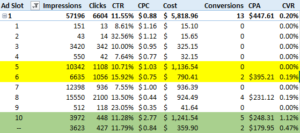
When analyzing the data, some interesting results appear. As you can, we spent 20% of the cost on QS 5 keywords to place them at position 1, although the keywords didn’t record a single conversion. On the other side, we spent the same amount on keywords with QS 10 which brought most of the conversion.
Summary
You can’t control how much other advertisers bid but you can place your ads at a level where they will be profitable. The factors which could be holding back profitably possibly include the conversion rate of your website, your conversion value, or even the quality score. Therefore, you should be smart in determining which bid strategies to go for, in order to be profitable and successful in setting your AdWords campaigns.

Entrepreneur focused on building MarTech products that bridge the gap between marketing and technology. Check out my latest product GA4 Auditor and discover all my products here.

